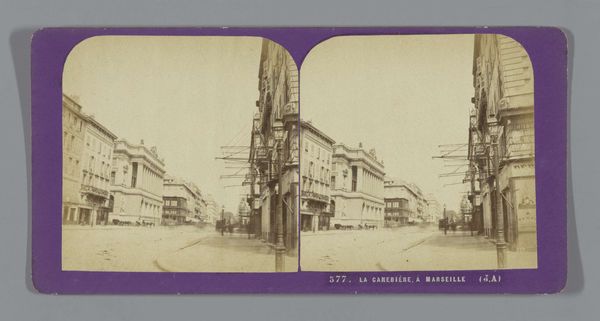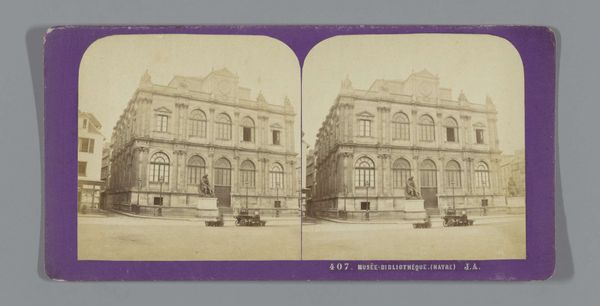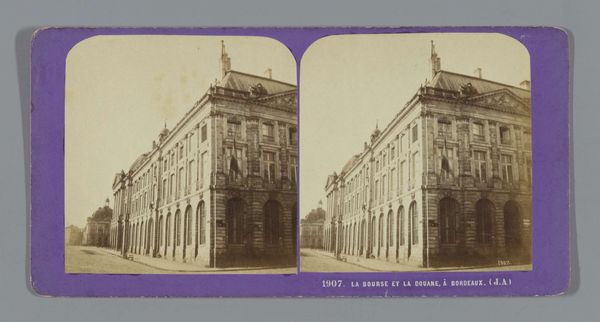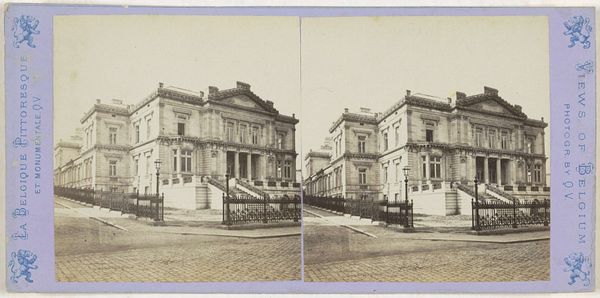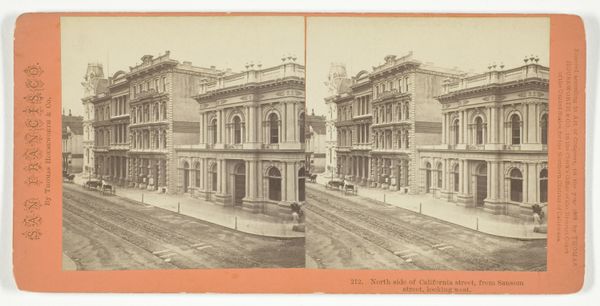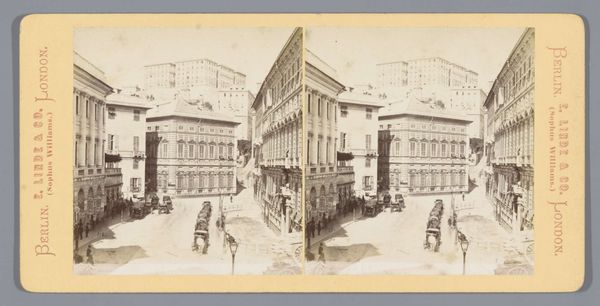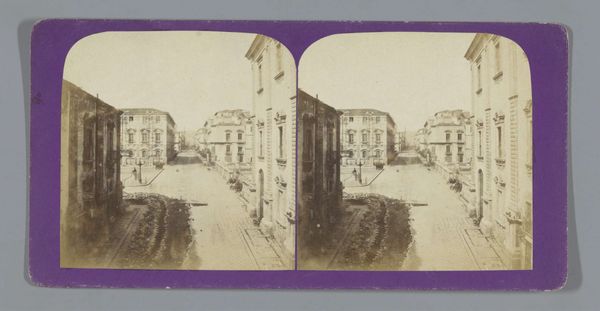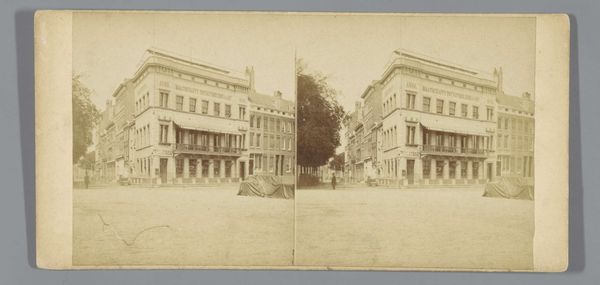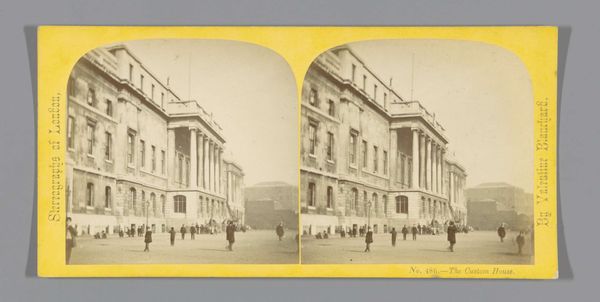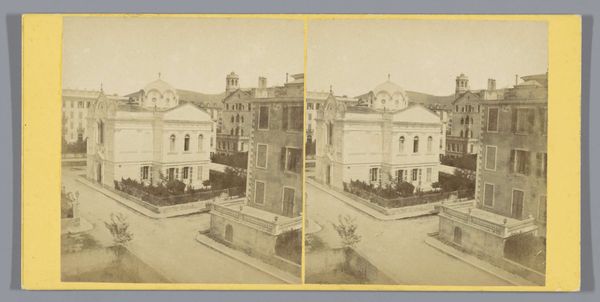
print, photography, gelatin-silver-print
# print
#
photography
#
coloured pencil
#
gelatin-silver-print
#
cityscape
#
realism
Dimensions: height 85 mm, width 170 mm
Copyright: Rijks Museum: Open Domain
Curator: Let’s consider this fascinating stereograph, “Exterieur van het Théâtre Français te Bordeaux,” created between 1862 and 1876 by Jean Andrieu. What strikes you initially? Editor: There's a tangible stillness in the scene, despite the suggestion of a bustling city. I'm immediately drawn to the way the light interacts with the stonework of the theater and the cobblestones; it emphasizes the raw materiality of urban construction in that period. Curator: Indeed, Andrieu captures not just the façade of the theater but the social context around it. Think about how theaters like this one functioned. They weren't just places of entertainment but were powerful markers of bourgeois cultural identity, and civic pride prominently placed within the urban landscape. Editor: Precisely, and that brings into question what the image doesn't immediately show; we see the architecture, the outward-facing presentation of the building. It would be important to investigate the methods by which these stereographs were circulated and consumed, because these shaped social relationships in ways we do not expect today. Curator: It is a gelatin silver print, but it is printed in stereo, for a dual image. That stereoscopic view adds another layer, doesn't it? How does this kind of reproduction affect the reception? Editor: It creates a simulated depth, a tactile engagement for a distanced audience. It transforms the theatre and surrounding streets into a commodity—an object to be examined, possessed and recontextualized based on factors surrounding its production, circulation and modes of exhibition. The work is intended to make us, the viewers, reflect. Curator: Absolutely, and let's also consider the choices inherent in using photography versus painting or engraving at the time. There's an implicit claim to objective reality, but that is a position created, not found. The Theatre becomes a signifier for an audience hungry for access to Parisian culture through reproductive imaging. Editor: I agree. By focusing on the material production and societal function of this print, we unveil an important narrative about 19th century cultural values and the mechanics through which these are constructed and maintained. Curator: So, in considering this stereograph, we are viewing more than just a theater's exterior; we glimpse at social values. Editor: Absolutely. By examining the interplay between the theater and its modes of production we learn far more than its surface suggests.
Comments
No comments
Be the first to comment and join the conversation on the ultimate creative platform.
